Spring Monarch Season
When we finally got the flower garden beds designed and planted five years ago we added in a plant or two of tropical milkweed in hopes of attracting monarch butterflies and caterpillars. For some reason those plants would last the year and then fade out—I’m not really sure what happened because our weather and situation is no different now than it was then, and we’ve even had colder winters since then and the tropical milkweed had returned.
In Florida, we had a a couple of plants in containers and some in our front flower bed at the rental house where we would see monarch caterpillars every now and then. South Florida has a year-round population of monarchs and tropical milkweed is commonly seen in landscaped areas around the region. Getting monarchs into our garden here in Texas seemed like it could potentially be a task but as we’ve seen, if you plant it, they will come. It might take a few seasons but they will find you. That goes for almost any butterfly or wildlife species—though we are waiting on the barred owl to decide to roost in the box we hung for it. Chris thinks we might have to relocate that to a better location.
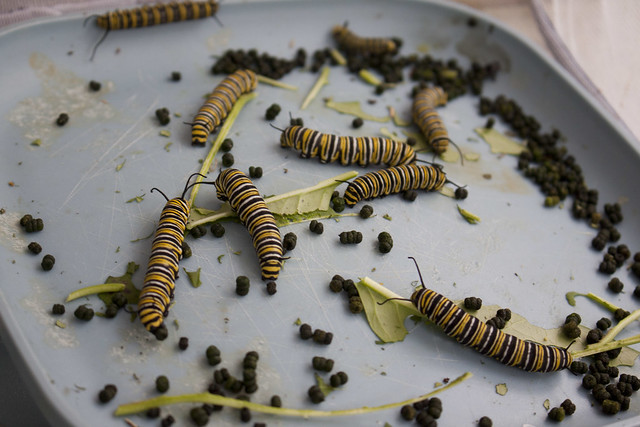
Lots of caterpillar frass—don’t worry, plates were cleaned right after this photo!
After finally raising monarchs over August-October last fall I knew I would go for it again this year but I didn’t realize the season would come on so quickly and at such a fast pace. Over the weekend of March 17th-18th we were over on Bolivar Peninsula with Marc and Eliana and she noticed a couple of monarchs on our way to lunch on Sunday. After lunch I noticed several and when we pulled into the driveway that evening I noticed a female laying eggs on the milkweed.
From there it was on for spring monarch season—eggs were everywhere! I initially collected 10 or 11 to hatch inside and keep in the cage because I wasn’t sure how much milkweed I would have to raise all of the eggs I was seeing. The milkweed was only several inches tall with some of the plants in pots on the potting bench a bit larger because I had overwintered them in protected conditions during the cold spells.
By the end of that week there were caterpillars hatching all over the place, in the yogurt container and then outside. I brought a couple of extra caterpillars into the tent that I saw on the potting bench because I figured I could handle a couple more and then we went camping for Easter weekend. Having all of the potted plants worked out perfectly at this time because they were all only instars 2-4 and not quite in the voracious eat-all-the-milkweed mode. That mode is where you give them milkweed thinking it will last the rest of the day only to come back a few hours later to see them wandering around the tent looking for more milkweed because they’ve eaten what you’ve given them. I packed the tent with as many plants as I could and hoped it would last the weekend. It did, though several plants were getting lean.
After that weekend I knew I would have enough milkweed to keep more and since we wouldn’t be going away for a weekend any time soon I decided to just start bringing in any other caterpillars I saw on the milkweed outside. On April 6th I was up to 25 caterpillars and later I was getting up to 30-35 caterpillars with several chrysalides in the tent. It was seriously caterpillar city and then I would see more momma monarchs coming through laying *more* eggs! Wooo boy.
This year I started using Journey North to log my sightings, which I’ve found very interesting to participate in. I also signed up for the Monarch Watch Listserv and had it send me a daily digest of what emails were going through the list. It’s been a very educational experience to be reading that list, with people who are working with monarchs in various capacities, from those at educational institutions to home gardeners and butterfly enthusiasts. I’ve learned a lot just in the last couple of months. One interesting thing this year that was noted was that there was a larger coastal migration coming out of Mexico, heading up the Texas coast to the Houston area due to a variety of factors, one of them being high heat in the Rio Grande Valley and also a lack of milkweed sprouting in some areas. The other route was to the west through Big Bend/El Paso and then over to central Texas. It’s been interesting to see them talk about predictions on the movement north and where milkweed was blooming or not. And this cooler spring stalled movement north as well as milkweed emerging so the butterflies lingered in the south longer than typical. If you really want to nerd out I recommend joining the listserv!
So around April 7th we got a cold front come through with temperatures dipping into the 50s and high 40s, definitely not temperatures where caterpillars do much movement. They all went into a bit of a dormant period but I brought them inside to warm them up and keep them happy since I had the ability to do that. Several had been looking to pupate so I wanted to help them out, too. And I caught the first caterpillar pupating on that afternoon of the 7th, pretty much from the start which I had never seen from the beginning. It was a great experience and I had Forest come in and watch with me! And then from there it was a combination of a mess of caterpillars on the bottom and a bunch of caterpillars in Js at the top prepping to pupate or pupating. From then until the 12th things were moving along ok, though I did have a caterpillar or two with molting issues that ended up dying.
On the 12th there began a series of failures to pupate. This is where they begin pupating and then stop for whatever reason and die. The first one or two didn’t bother me so much but then it was several more and I began to get worried that there was some disease spreading. I immediately cleaned the cage up as best as I could—it wasn’t bad to begin with but I wanted to do some increased vigilance. I texted my friend who also raises monarchs here in Houston and she was going through the same thing. It made me feel better that I wasn’t alone and we thought maybe it was a genetic issue.
Prior to the failures to pupate I had noticed one chrysalis that had a gap at the top but inside it looked like it was still alive, you could see movement. I sent her a photo and asked if she’d seen that before and she had had one last year and said it was a fatal issue and it was best to euthanize in the freezer. That was hard for me to get the guts up to do but I did it. In hindsight I wish I’d left that one alone because I had some other oddly shaped chrysalides later that hatched normal butterflies and I wish I had given this one a chance. Maybe it wouldn’t have helped but maybe it would have.

Yes, that one pupated on the rock! It and another one on a different rock hatched just fine.
The failures to pupate kept going until the 14th and then we switched to pupating fully but then falling from their little web that holds them in place right after they pupated. I think there were about four that ended up doing this and some I caught not long after they have finished their transformation so they were incredibly soft and still wiggling around inside and at least another was caught a few hours later so it was kind of flat on one side. I had also put a couple of rocks into the tent to keep it from blowing away—last year’s mistake I learned from—and one of the chrysalides fell onto that which I figured was likely fatal but it was still moving so I gave it a chance. All of the fallen chrysalides, I super glued their cremaster to stick inside the tent which I had setting across the two rocks. I figured I’d give them the chance and later they all proved to have perished from their falls. They looked ok for a couple of days but then you could see the browning and blackening and knew it was over. *bummer* I put them in the freezer to make sure they were dead. Seriously, those few days really sucked.
But then we got over the hump and by the 18th I had 25 chrysalides and then by the 24th 31 chrysalides. The first pupa started eclosing on the 25th and the final one opened this morning, May 12th. Ok, somehow my math doesn’t add up, I’m not sure what happened but my tallys for male and female after going through my notes are showing 29 total butterflies and outside there are 29 empty chrysalides—so I must have miscounted that 31 at some point. Oops! Next time around I’ll start the tally for eclosing before hand instead of just hand writing notes and relying on that. In the end there were 16 females and 13 males.
The one issue I had with a newly hatched butterfly was the one that had wing deformities that would never allow it to fly. That one also sucked because I knew I had to euthanize it. I spent a few moments with it taking photos and then told it I was sorry for its sorry state and that it was for the best and then put it in a bag in the freezer. Another big bummer. It’s a lot easier to just nature take care of this stuff on its own.
So, that’s where I’m at for spring monarch season. I should go back and tally up the ones from the late summer/fall last year if my notes are good enough. Now that the last butterfly is out I’ll clean up the cage and put it away for awhile until the monarchs start making their way back through here in the mid to late summer.
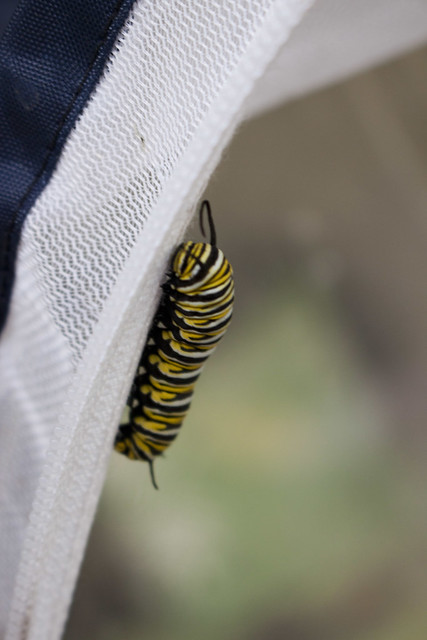
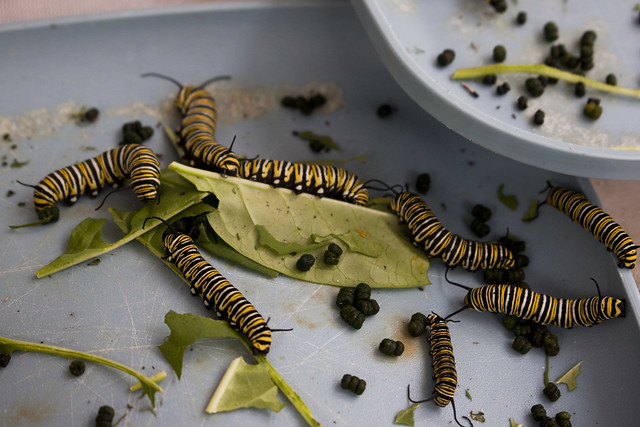
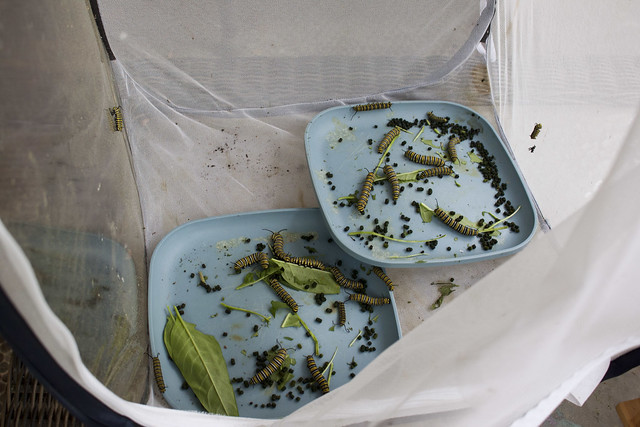


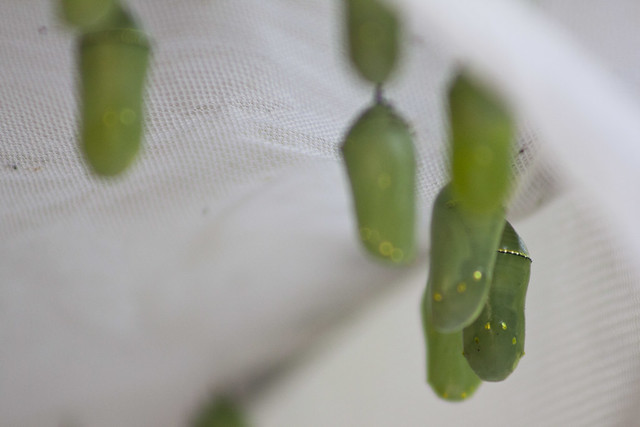
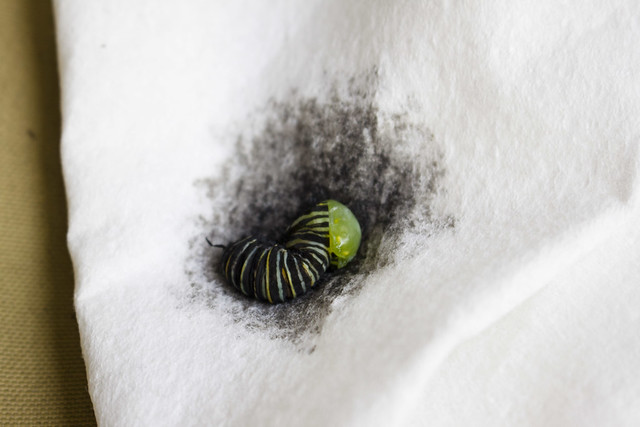
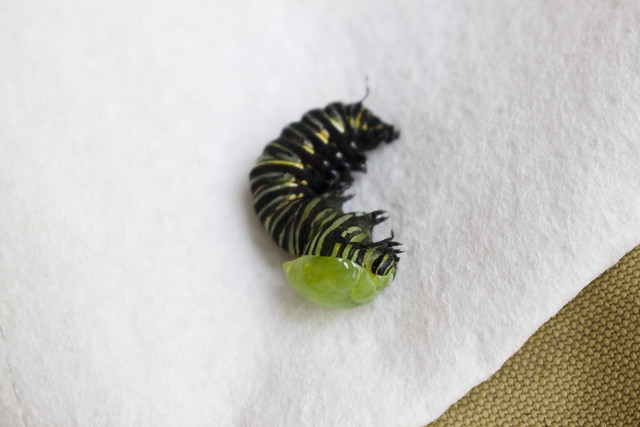
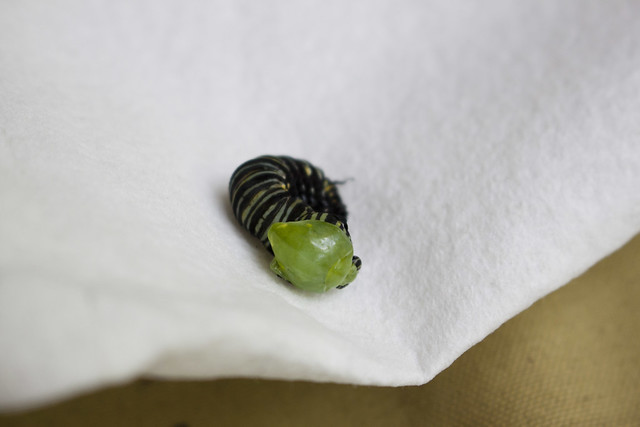

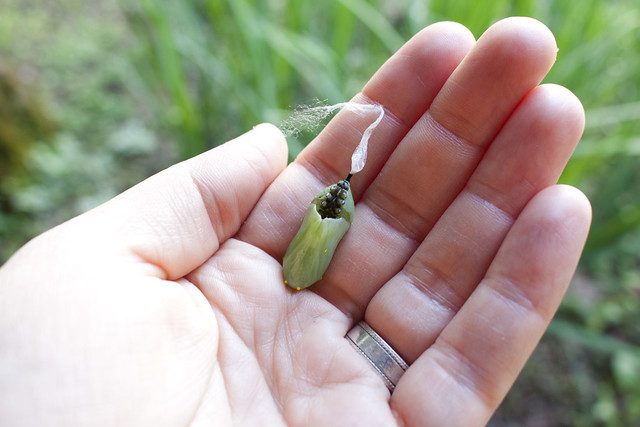
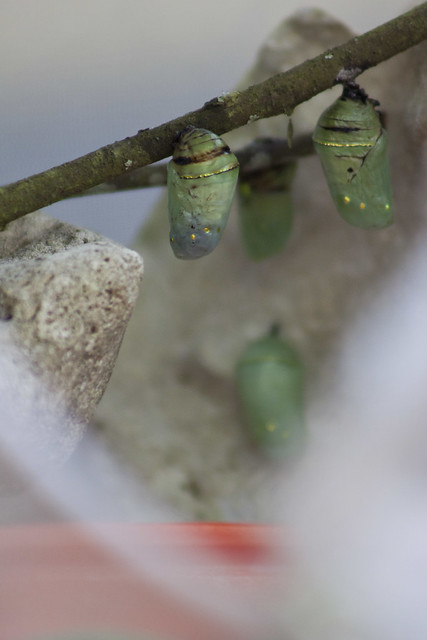

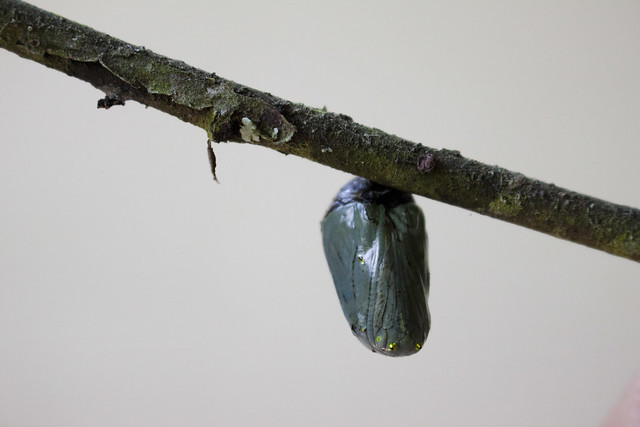

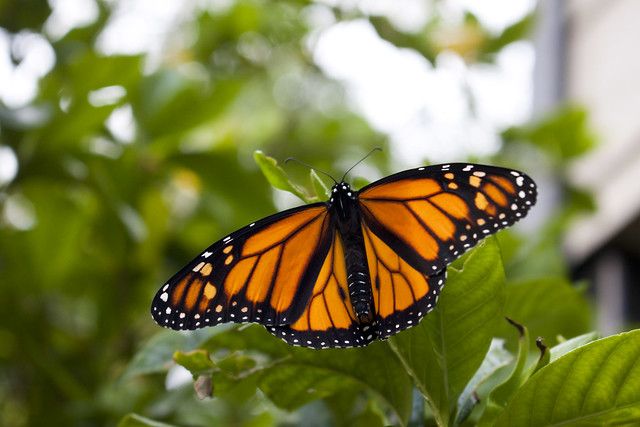
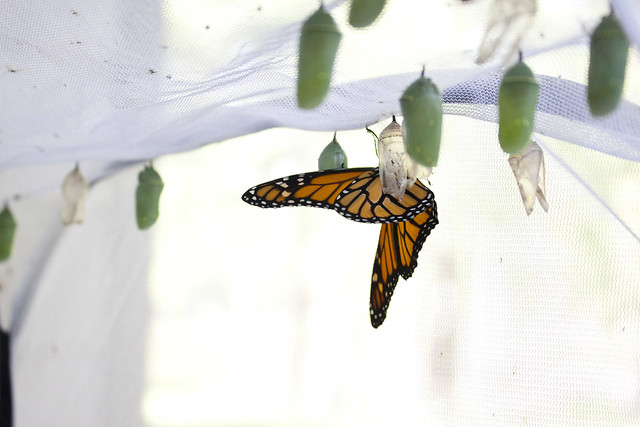
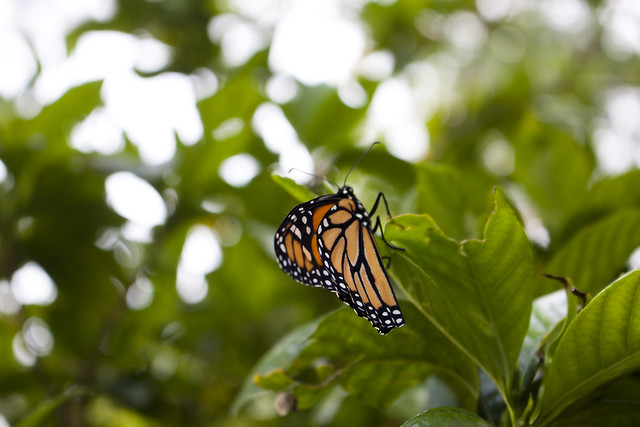
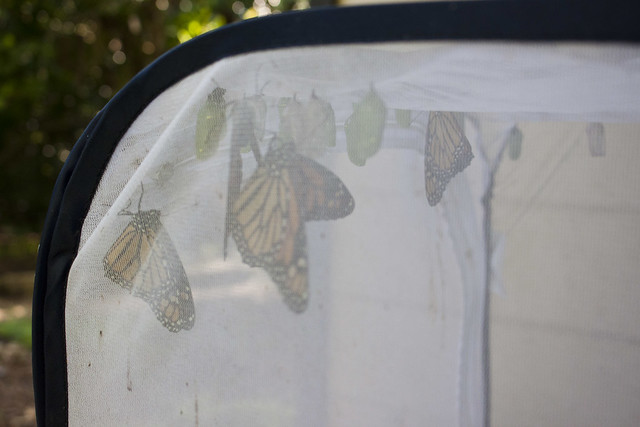
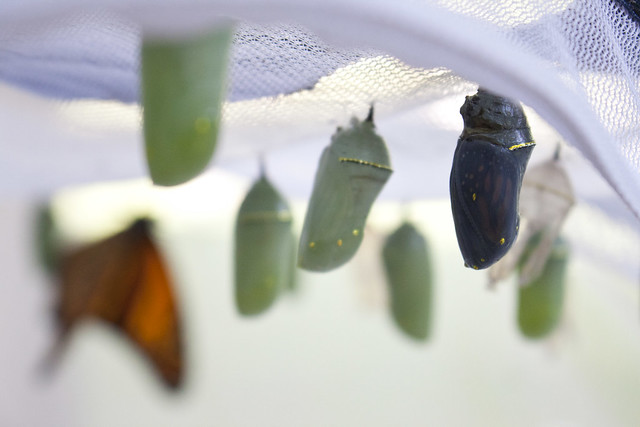
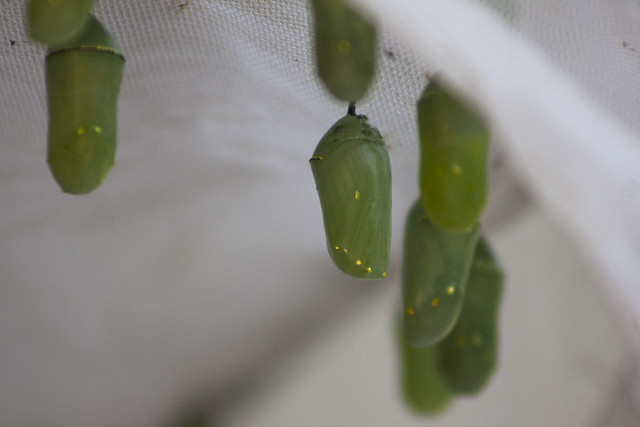
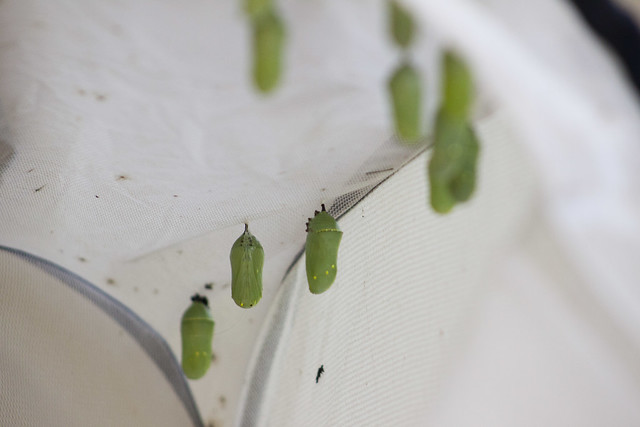
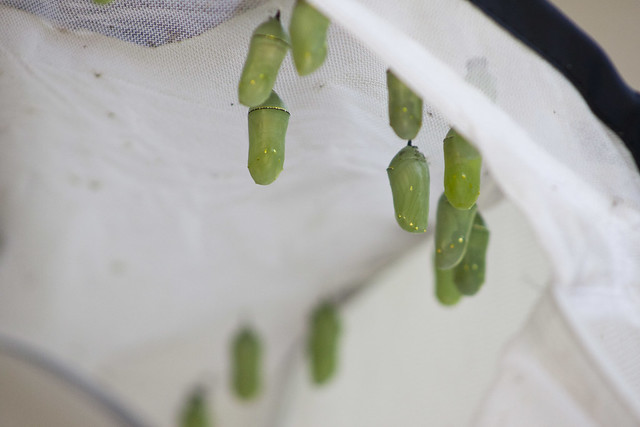
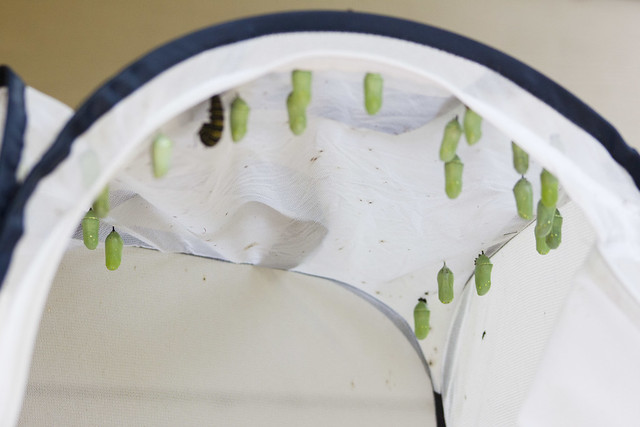
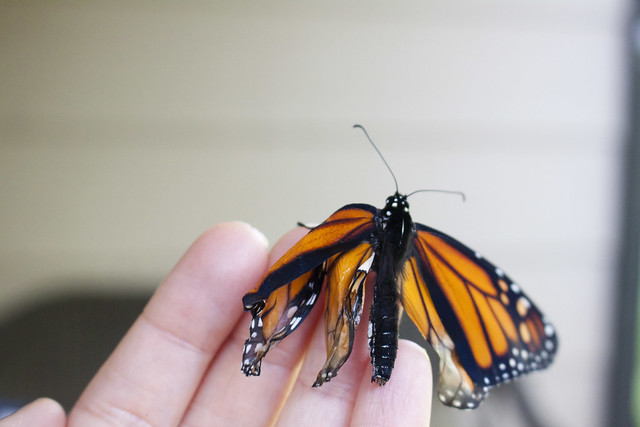
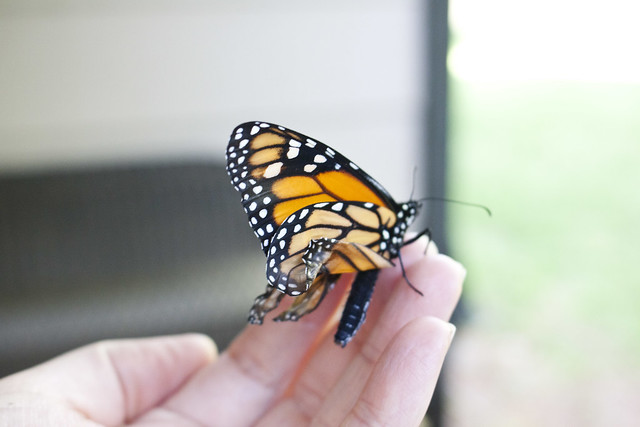
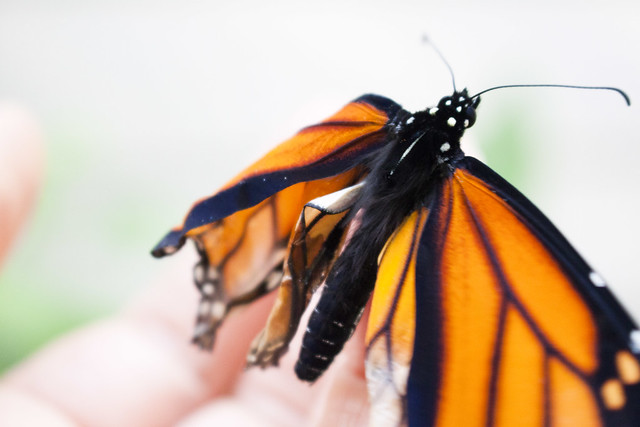

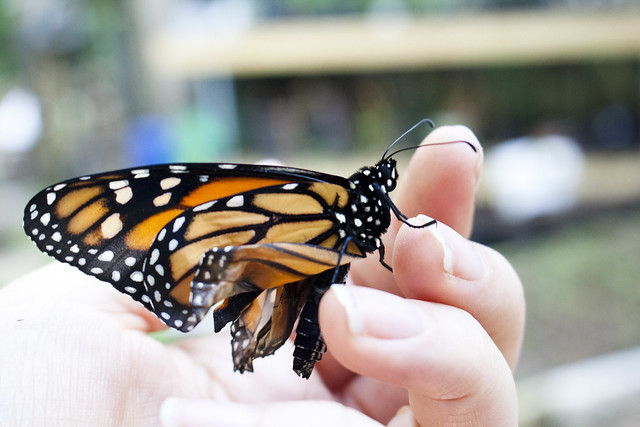
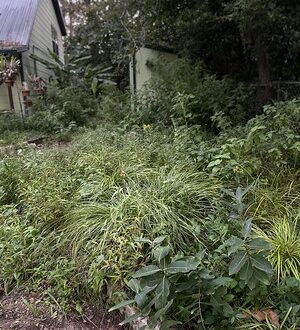
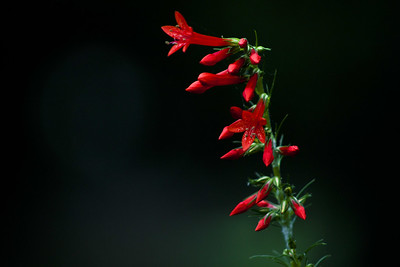
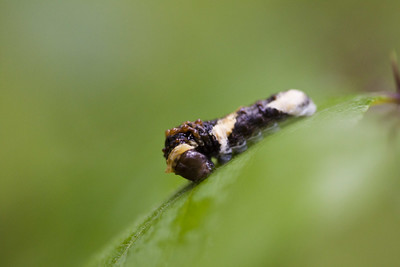
One Comment
Rosemarie Austin
Such a neat post. Thanks for sharing.